MOVING TOWARDS SUSTAINABLE SERVICE DELIVERY IN THE COMOX VALLEY: “Asset Management for Sustainable Service Delivery is much more than setting some money aside for infrastructure replacement. It must be a comprehensive and integrated approach that links the past, present and future,” stated Geoff Garbutt, City of Manager, City of Courtenay
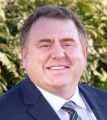
“In my mind, the phrase Asset Management for Sustainable Service Delivery is a euphemism for make the right decisions, think about the future, and then take action. It has got to evolve because the future is NOT the past. We also need to adapt moving forward. So, that means Asset Management for Sustainable Service Delivery has got to reflect where the community is going as well. If you are only going to make decisions that maintain your assets as they are, that is insufficient. The process needs to evolve to meet the community’s changing needs,” stated Geoff Garbutt.
REFLECTIONS ON SHARING A MISSION WITH WALLY WELLS: “The success of our collaboration is that it is relationship-based and founded on respect and trust,” stated Kim Stephens, Executive Director, Partnership for Water Sustainability in BC
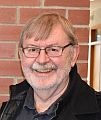
“Alignment of efforts with Wally Wells has been key to elevating Water Sustainability and Asset Management as top-of-mind priorities for local governments. The two priorities are inextricably linked, and our efforts are complementary in facilitating peer-to-peer learning across boundaries. Beginning in January 2011, Asset Management BC published the first of 26 articles contributed by the Partnership to the quarterly newsletter edited by Wally. These have connected the dots between sustainable service delivery and water sustainability,” stated Kim Stephens.
REFLECTIONS ON SHARING A MISSION: “Wally Wells brought us on this journey. He helped us expand our discourse and our understanding of alignment across sectors and stewardship roles,” stated Paul Chapman, Chair of the Watershed Moments Series

“Our discussions lead to an expanded common vocabulary. Sustainable Service Delivery, Eco-Assets and Eco-Asset Management, the Ecological Accounting Process, Municipal Natural Asset Inventory, Riparian Deficit, and watershed stewardship are some of the words in our new common tongue. The rabid environmentalist, the cold-hearted accountant and the aloof engineer could come together and focus on a common goal – Water Balance. At a very key level, it is about our relationship with water and with each other. We design and build our communities based on our relationship to water,” stated Paul Chapman.
DOWNLOAD: “Living Water Smart in British Columbia: Moving Towards Sustainable Service Delivery in the Comox Valley” – released by the Partnership for Water Sustainability (May 2023)
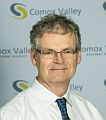
“I am a project person. I come from a project background and am used to the stages of a project – from conception through budgeting, procurement, construction, and commissioning. It is a very structured spectrum of activities. There is a defined beginning and end. But that is not the way it is in the world of water stewardship. It is a bit like a creek. It just meanders all over the place such that you just cannot seem to get things to completion even when the process is a good one. You learn that this is what it means to be on a journey,” stated Marc Rutten.
RIPARIAN AREA REGULATION IN BRITISH COLUMBIA: With development of EAP, the Ecological Accounting Process, the Partnership for Water Sustainability honours the memory and legacy of the late Erik Karlsen who did so much for streamside protection in British Columbia

The 2014 investigation and Striking a Balance report by the BC Ombudsperson identified “significant gaps between the process the provincial government had established when the Riparian Areas Protection Regulation was enacted and the level of oversight that was actually in place.” Erik Karlsen was concerned about the Ombudsperson’s findings. In 2015, he created a matrix to explain how to integrate two foundational concepts – Daniel Pauly’s “Shifting Baseline Syndrome” and Richard Horner and Chris May’s “Road Map for Protecting Stream System Integrity” – that provide a path forward for restoring riparian integrity.
LOOKING AT GREEN ROOFS THROUGH A WATER BALANCE LENS: “In 2020, our monitoring captured the heat dome. We also had a 50-plus day drought. That was great because we were able to check how the water cavity allowed the connected green roof to stay moist, longer, and more green,” stated Harvy Takhar, Utilities Engineer with the City of Delta
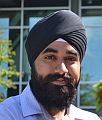
Harvy Takhar is following his passion in unexpected ways. It led him down the green roof pathway to international recognition. He had an epiphany when he recognized there was a gap in green roof engineering. “The idea was to harvest the benefits of green roofs, while keeping them healthy by storing water considering most green roofs adversely affect building systems during the drought. So we added a water cavity, known as the blue roof component, that will feed the green roof portion with capillary irrigation, and it can draw water when it needs it,” says Harvy Takhar.
THE MISSION IS TO DEVELOP NEXT GENERATIONS OF LOCAL GOVERNMENT STAFFS: “The partnership between local governments and the MABRRI research institute at Vancouver Island University is the pilot for upscaling EAP, the Ecological Accounting Process,” stated Murray Walters, Manager of Water Services, Regional District of Nanaimo
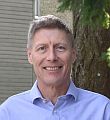
A theme dominating the news these days is the shortage of skilled, trained or qualified people. The EAP Partnership is part of the solution in the local government setting. Investing in people takes patience, commitment and time. There is no shortcut to build in-house capacity. The partners have committed to investing in youth at Vancouver Island University so that they have the understanding to apply EAP. “We are applying EAP to relatively small scale streams to illustrate its usefulness and effectiveness. The application of EAP will grow from there, I am sure,” stated Murray Walters.
LOCAL GOVERNMENTS INVEST IN YOUTH AT VANCOUVER ISLAND UNIVERSITY: “Partnerships with local governments and others are essential. They allow students to work on collaborative projects. Everyone benefits,” stated Graham Sakaki, Manager, Mount Arrowsmith Regional Research Institute
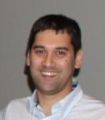
“There are lots of partnerships that exist for selfish reasons. But the EAP Partnership is selfless; and from all angles. It is a leap of faith for member local governments. Partnership for Water Sustainability commitment to passing the baton is unwavering. Vancouver Island University is all-in because EAP is an idea that can change the game. And students are excited to contribute to the change. Students will be creating a portfolio of professionals who they know. These are important relationships for them to make. And they are gaining important knowledge too,” stated Graham Sakaki.
ASSET MANAGEMENT FOR SUSTAINABLE SERVICE DELIVERY: “Projects have a beginning, a middle, and an end. But the asset management parade never ends – it is cyclic,” stated Bill Sims (Winter 2023 issue of Asset Management BC Newsletter)

“A key consideration is intergenerational equity. This is finding the right balance between spreading the cost of services over citizens who benefit now and in the future without burdening future generations with the inability to sustain services. It is a core responsibility of a Council – enshrined in BC’s Community Charter – to provide for the stewardship of the public assets of the community.. It’s critical to ensure we are facing the right direction. Our role is to leave our communities a better place than we found them and pass the torch to the next generation,” stated Bill Sims.
ROAD MAP FOR STREAM SYSTEM INTEGRITY: The enduring legacy of Richard Horner and Chris May is that they applied systems thinking, investigated whole systems in place, identified four limiting factors, and definitively established their order-of-priority
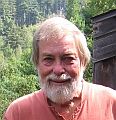
In the 1990s, Puget Sound research correlated land use changes with impacts on stream system condition. “So many studies manipulate a single variable out of context with the whole and its many additional variables. We, on the other hand, investigated whole systems in place, tying together measures of the landscape, stream habitat, and aquatic life. Unless and until land development practices mimic the natural water balance, communities cannot expect to restore the biological communities within streams. Simply put, hydrology hits first and hardest,” stated Richard Horner.

